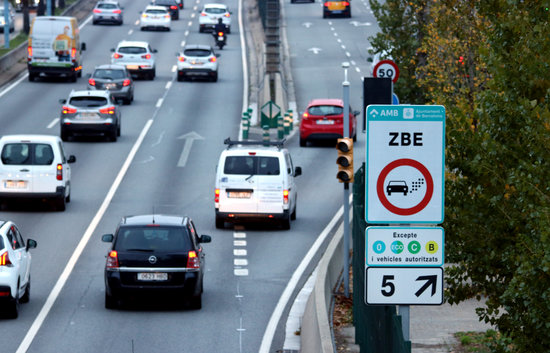European Environment Agency warns Barcelona's low emission zone may not be 'sufficient'
Expanding pedestrianized superblocks is "effective" way to reduce exposure to pollution, says EEA

According to the European Environment Agency, the implementation of the low emission zone in the Barcelona area alone could possibly not be enough to bring down pollution.
Launched on January 1 of this year, the three-month grace period ended up being extended until September 15 due to the pandemic.
"The introduction of low emission zones helps cities to reduce their NO2 concentrations to a large extent," explains EEA expert Evrim Dogan. "However, this does not mean it is the only measure that they can take or that they are sufficient."
The nearly two months of strict home confinement orders in the spring, which reduced mobility and therefore pollution in Barcelona and elsewhere spectacularly, make it hard to assess the impact of low emission zone.
Nitrogen dioxide targets
Yet, whether pollution has dropped as a result of the LEZ or for other reasons, Dogan believes Barcelona could be on track to meeting its nitrogen dioxide targets this year, set at 40 μg/m3 per season.
No season this year has surpassed the 40 μg/m3 limit, while two did in 2019 and three did in both 2018 and 2017.
This marks a swift change for the European city with the greatest drop in pollution levels during lockdown—and only a year after the EU Commission decided to take Spain to court over contamination in the Barcelona metropolitan area and Madrid.
Superblocks and pollution exposure
Dogan endorses the implementation of Barcelona's so-called superblocks, that is to say, blocks of pedestrianized streets.
Though some oppose Barcelona mayor Ada Colau's strategy to tackle her city's air quality problem, Dogan argues superblocks are "effective in terms of limiting exposure" to pollution, but believes they must also be coupled with the expansion of urban green spaces.